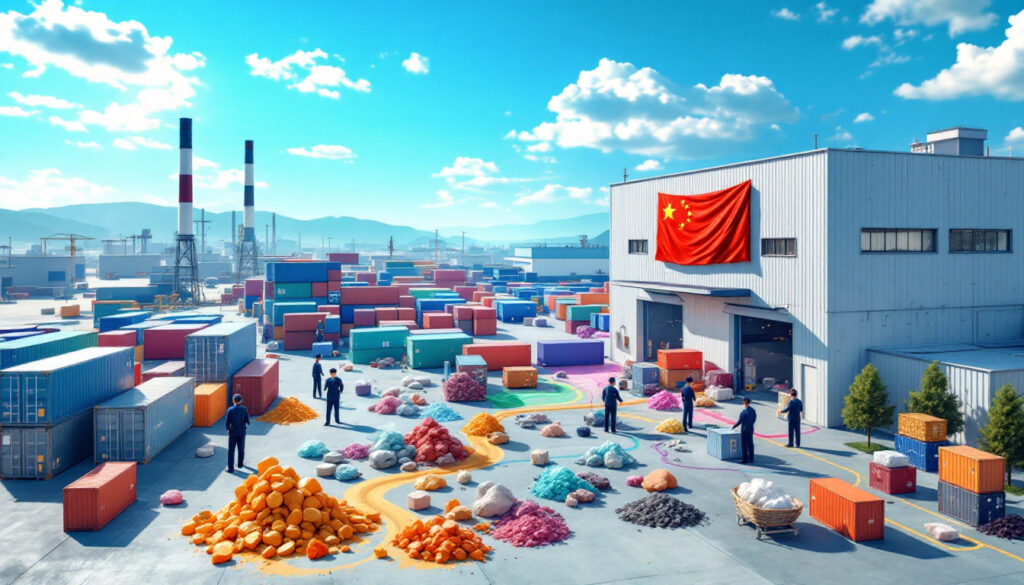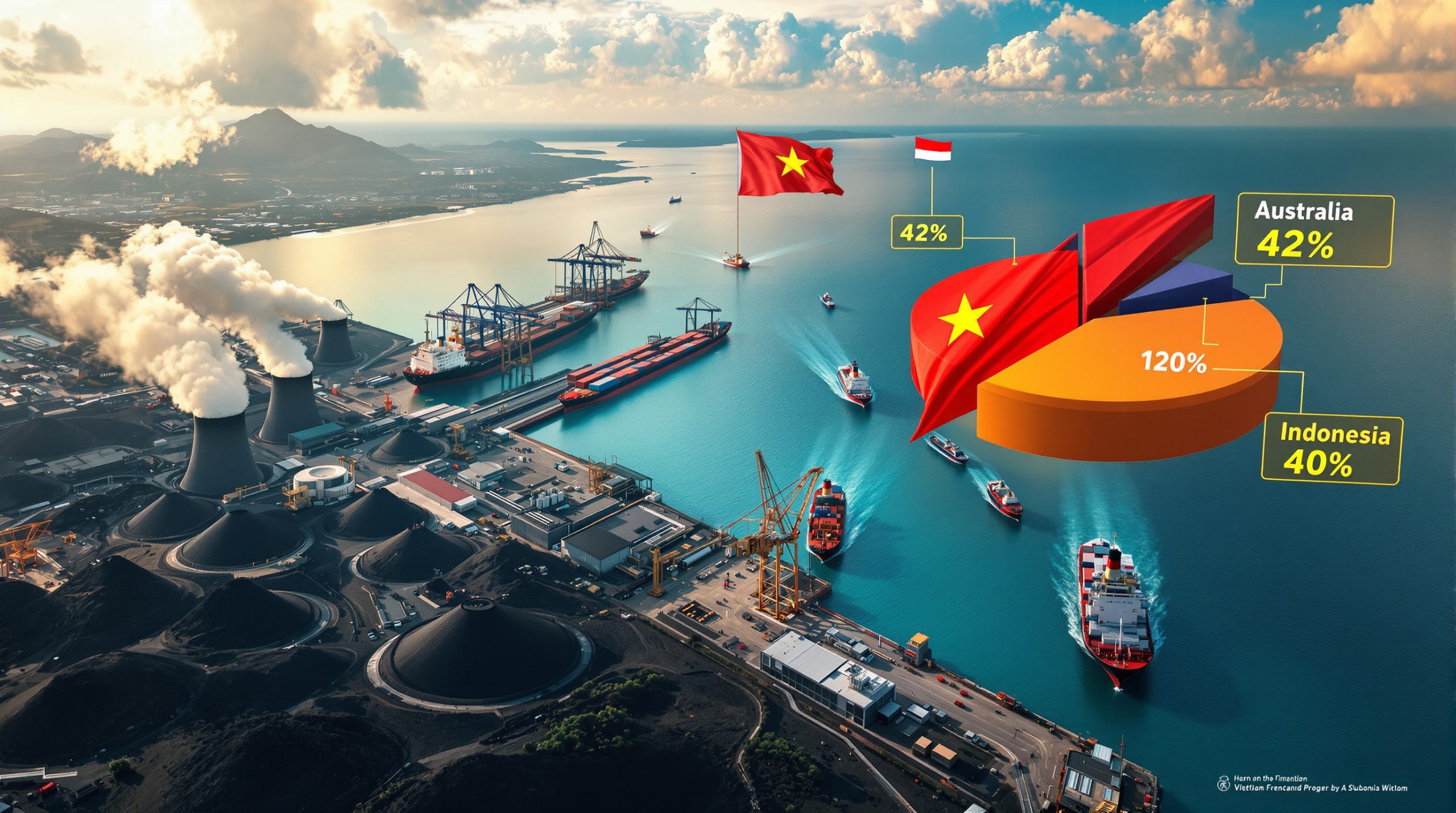China's Strategic Minerals Smuggling Crackdown: National Security and Global Supply Chain Implications
China's recent campaign against strategic minerals smuggling marks a pivotal shift in resource management strategy with far-reaching implications. This crackdown targets unauthorized exports of critical materials including gallium, germanium, antimony, tungsten, and rare earth elements—all fundamental to advanced technologies essential for modern economies and defense systems.
Why Is China Cracking Down on Strategic Minerals Smuggling?
The National Security Imperative
China's Commerce Ministry launched this special initiative after identifying growing concerns about the unauthorized flow of critical minerals outside its borders. These materials form the backbone of advanced technologies including semiconductors, defense systems, and renewable energy infrastructure—sectors the Chinese government has explicitly designated as vital to national security and economic sovereignty.
According to the U.S. Geological Survey's 2024 Critical Minerals Report, China produces approximately 95% of global gallium, giving it unparalleled control over this semiconductor-essential material. Similarly, the International Energy Agency notes that China sources roughly 60% of rare earth elements globally, making these resources strategic leverage points in international relations.
"Control over critical minerals is inseparable from national security in the age of AI and green tech," explains Jane Nakano, Senior Fellow at the Center for Strategic & International Studies. This perspective has been formally enshrined in China's 2024 National Security Law amendments, which explicitly link mineral resource security to national sovereignty.
Export Controls and Their Impact
Since implementing export restrictions on gallium, germanium and other strategic minerals in late 2023, Chinese authorities have observed increasingly sophisticated evasion tactics. The new crackdown specifically targets collusion between domestic entities and foreign partners circumventing these controls.
Particularly concerning to Chinese authorities is the military application of these materials. The U.S. Department of Defense identified gallium nitride (GaN) as essential for both 5G infrastructure and advanced military radar systems in its 2023 assessment, highlighting why China considers control of these resources a matter of strategic importance.
What Methods Are Smugglers Using to Evade Detection?
Common Smuggling Techniques
The Commerce Ministry has identified several primary methods smugglers employ to bypass export controls:
- False declaration schemes: Mislabeling strategic minerals as common materials to avoid scrutiny
- Concealment tactics: Physically hiding restricted minerals within shipments of unrestricted goods
- Third-country re-routing: Shipping materials to intermediate countries before reaching final destinations
- Documentation fraud: Creating falsified export licenses and certificates
The Global Initiative Against Transnational Organized Crime reported a 23% increase in "third-country rerouting" via Vietnam in 2024, highlighting the growing sophistication of these operations.
Sophisticated Evasion Networks
"Sophisticated networks use shell companies in Dubai and Singapore to obscure origins," noted an Interpol Metals Task Force report from 2023. These operations typically involve multiple parties across different jurisdictions, creating complex webs that challenge enforcement efforts.
A prime example occurred in May 2024, when Malaysian authorities seized 12 tons of tungsten misdeclared as "aluminum alloy scrap" according to the Straits Times. The shipment originated in China's Guangdong province and was bound for a front company in Europe.
Chinese customs officials have responded by deploying gamma-ray spectroscopy technology at major ports to detect concealed strategic minerals. This technology can identify specific elements through their unique radiation signatures, even when hidden within other materials.
Which Strategic Minerals Are Most Targeted by Smugglers?
High-Value Technology Metals
The minerals under the strictest export controls and most frequently targeted by smugglers include:
| Strategic Mineral | Primary Applications | Global Supply Significance |
|---|---|---|
| Gallium | Semiconductors, 5G infrastructure | China produces ~95% of global supply |
| Germanium | Fiber optics, infrared optics, solar cells | China controls ~67% of world production |
| Antimony | Flame retardants, batteries, electronics | China supplies ~60% of global market |
| Tungsten | Aerospace, military applications | China accounts for ~83% of global output |
| Rare Earth Elements | Magnets, catalysts, electronics | China dominates with ~60% of global production |
The U.S. Geological Survey confirmed in 2023 that China controls 67% of global germanium production, a metal critical for fiber optic systems and infrared optics. Perhaps more concerning from a defense perspective, the Pentagon highlighted in a 2024 report that China produces 83% of global tungsten, an essential component in hypersonic missile technology.
Critical Rare Earth Elements
Among rare earth elements, those most frequently involved in smuggling operations include:
- Neodymium and praseodymium (used in permanent magnets)
- Dysprosium and terbium (used in high-performance magnets)
- Yttrium (used in phosphors and ceramics)
MIT Technology Review recently highlighted dysprosium's critical role in high-temperature magnets for electric vehicle motors, noting that even minor supply disruptions can have outsized impacts on manufacturing capacity.
How Does Mineral Smuggling Affect Global Supply Chains?
Market Distortions and Price Volatility
Smuggled materials create parallel supply channels that undermine legitimate market mechanisms. S&P Global Commodity Insights documented 40% price volatility for neodymium in 2023 directly attributed to inconsistent supply flows and market uncertainty.
This volatility creates cascading effects:
- Unpredictable price fluctuations as materials appear and disappear from markets
- Quality control issues when materials bypass standard verification processes
- Reduced effectiveness of government policies designed to manage strategic resources
- Undermined efforts to establish transparent and sustainable supply chains
The World Economic Forum reported in 2024 that 17% of global technology manufacturers experienced unexpected shortages due to supply chain disruptions linked to strategic mineral availability.
Impact on Technology Manufacturing
"Smuggling undermines OECD Due Diligence Guidelines, putting firms at legal risk," warned the OECD Responsible Sourcing Team in their 2024 guidance update. For companies dependent on these critical minerals transition, the consequences are severe:
- Supply chain uncertainty affecting production planning
- Compliance challenges for companies committed to ethical sourcing
- Potential legal exposure when unknowingly purchasing smuggled materials
- Compromised product quality when using materials of uncertain provenance
A stark illustration came in March 2025 when Reuters reported that Tesla's supply chain audit revealed smuggled Chinese graphite in battery components, forcing costly product recalls and highlighting the hidden risks in opaque supply networks.
What Are the Geopolitical Implications of China's Crackdown?
Resource Nationalism and Strategic Leverage
"This is economic statecraft – China's controls mirror OPEC's oil leverage," observed Dr. Emily Benson of the Center for Strategic and International Studies in 2024. By restricting exports of these critical materials, China gains:
- Leverage in trade negotiations with technology-dependent nations
- Protection for domestic industries that use these materials
- Ability to influence global technology development pathways
China's approach exemplifies a broader trend of resource nationalism that has significant implications for global technology competition and geopolitical power dynamics.
Western Response Strategies
Countries concerned about access to these critical materials are developing multi-faceted responses. The United States allocated $2.1 billion for rare earth processing through the Inflation Reduction Act, while the European Union's Critical Raw Materials Act established a target to source 25% of critical minerals domestically by 2030.
Other strategic responses include:
- Accelerating domestic mining and processing capabilities
- Establishing strategic reserves of critical minerals
- Developing substitute materials and recycling technologies
- Forming strategic partnerships with alternative supplier nations
Toyota's development of rare earth-free motors, reported by Nikkei Asia in April 2025, represents one of the most promising technological paths to reducing dependence on these strategic resources.
How Is China Enforcing Its Anti-Smuggling Campaign?
Multi-Agency Coordination
The new campaign involves unprecedented coordination between:
- General Administration of Customs
- Ministry of Commerce
- Ministry of Public Security
- State Administration for Market Regulation
- Local government enforcement agencies
This coordinated approach has yielded impressive results, with China's General Administration of Customs reporting a 127% year-over-year increase in strategic mineral seizures during the first quarter of 2025.
Enhanced Detection and Penalties
Authorities have implemented strengthened enforcement mechanisms including:
- Advanced scanning technologies at ports and border crossings
- Increased inspection frequency for high-risk shipments
- Enhanced data-driven mining operations to identify suspicious trade patterns
- Stricter penalties for convicted smugglers and facilitating entities
- Rewards for whistleblowers who report smuggling operations
The South China Morning Post reported in January 2025 that Guangdong province has piloted a blockchain-based mineral tracing system to authenticate the origin and movement of strategic minerals throughout the supply chain. This technology creates an immutable record that helps authorities distinguish legitimate shipments from illegal exports.
What Are the Economic Consequences of Strategic Mineral Controls?
Domestic Industry Protection
China's export controls and anti-smuggling efforts provide significant advantages to domestic manufacturers. Benchmark Mineral Intelligence calculated a 32% cost advantage for Chinese EV battery makers in 2024 due to preferential access to critical materials.
These advantages extend across multiple dimensions:
- Preferential access to critical materials for Chinese technology companies
- Lower input costs compared to international competitors
- Enhanced vertical integration opportunities within Chinese supply chains
- Protected development of high-value downstream industries
Global Price Effects
The combination of formal export controls and crackdowns on smuggling has created significant price effects:
- Price premiums of 15-40% for restricted minerals in international markets
- Growing cost pressures for non-Chinese manufacturers in strategic sectors
- Increased investment in recycling and material recovery technologies
- Accelerated research into alternative materials and technologies
"Diversification requires 5–7 year lead times for new mines," notes Simon Moores, CEO of Benchmark Mineral Intelligence, highlighting why short-term alternatives remain limited.
How Can Companies Navigate China's Strategic Minerals Regulations?
Compliance Best Practices
For companies dependent on Chinese strategic minerals, navigating the new regulatory landscape requires:
- Thorough supply chain due diligence to verify mineral sources
- Development of relationships with authorized Chinese exporters
- Diversification strategies to reduce dependency on single-source materials
- Investment in traceability technologies to verify material provenance
- Engagement with industry associations addressing critical mineral challenges
Alternative Sourcing Strategies
Forward-thinking companies are exploring multiple avenues to reduce dependency:
- Partnerships with emerging producers in countries like Australia, Brazil, and Vietnam
- Investments in recycling and urban mining technologies
- Research into substitute materials with similar performance characteristics
- Redesigning products to reduce reliance on restricted minerals
What Does the Future Hold for Strategic Mineral Supply Chains?
Evolving Global Landscape
The strategic minerals market is likely to undergo significant transformation in response to China's policies:
- Accelerated development of non-Chinese mining and processing capacity
- Increased government intervention in strategic mineral markets globally
- Growing premium for "secure" supply chains with transparent provenance
- Technological innovation to reduce dependency on specific materials
The Fraunhofer Institute reported in 2024 that recycling currently meets only 12% of rare earth demand, indicating substantial room for growth in circular economy approaches.
Sustainability and Ethical Sourcing Considerations
As supply chains reconfigure, growing attention is being paid to:
- Environmental impacts of expanded mining operations
- Labor practices throughout the supply chain
- Community impacts in resource-rich regions
- Carbon footprint of mineral processing and transportation
Apple's closed-loop cobalt initiative, detailed in their 2025 Environmental Report, demonstrates how leading companies are addressing both supply security and sustainability concerns simultaneously through innovative recycling programs.
FAQ: China's Strategic Minerals and Global Supply Chains
What exactly are "strategic minerals" in the Chinese context?
Strategic minerals are resources deemed essential for national security, technological development, and economic competitiveness. China's official designation includes gallium, germanium, antimony, tungsten, and specific rare earth elements that are crucial for advanced technologies including defense systems, renewable energy, and telecommunications infrastructure.
How significant is China's role in global strategic mineral supply?
China dominates global production of numerous strategic minerals, controlling between 60-95% of worldwide output for key materials like gallium, germanium, and various rare earth elements. This concentration gives China substantial influence over industries dependent on these resources.
Can recycling help address strategic mineral supply concerns?
While recycling offers a partial solution, current recovery rates for most strategic minerals remain below 20%. Technological limitations, complex product designs, and economic factors constrain recycling's immediate impact. However, investments in advanced recycling technologies are increasing as supply concerns grow.
Are there viable substitutes for these strategic minerals?
Substitution possibilities vary significantly by material and application. While alternatives exist for some uses, many advanced technologies rely on the unique properties of specific elements. Complete substitution often involves performance trade-offs or significantly higher costs, making it challenging to eliminate dependency entirely.
Disclaimer: This article contains analysis of current trends and potential future developments in strategic mineral markets. The geopolitical situation and regulatory environment surrounding critical minerals are rapidly evolving. Readers should consult with qualified legal and supply chain professionals before making business decisions related to strategic mineral sourcing or compliance. The US-China trade war impact and Trump's critical minerals order have further complicated this landscape, while Greenland strategic minerals development offers potential alternatives to Chinese supplies.
Looking for the Next Big Mineral Discovery?
Don't miss out on potentially transformative ASX mineral discoveries. Gain instant alerts for significant mineral finds with Discovery Alert's proprietary Discovery IQ model, ensuring you're positioned ahead of the market before news spreads. Visit the Discovery Alert discoveries page to understand how major mineral discoveries can lead to exceptional investment returns.




